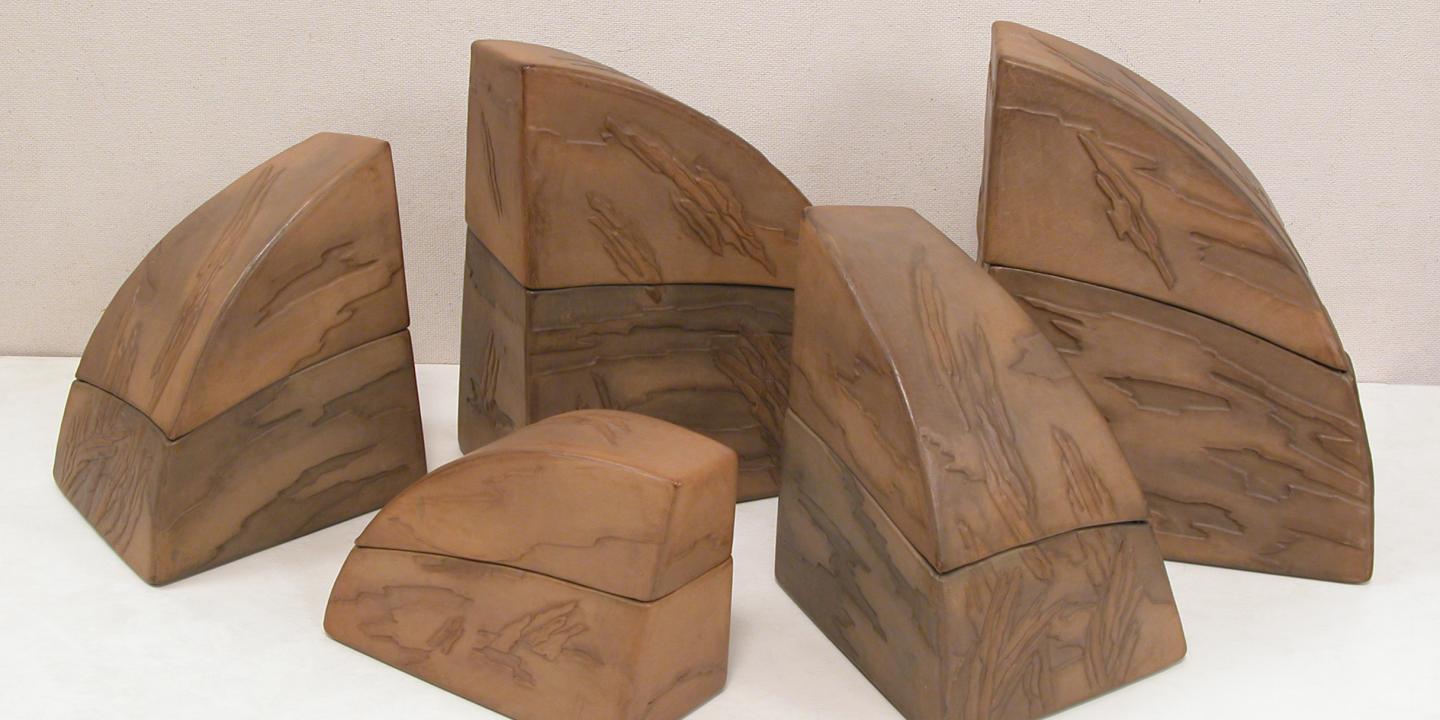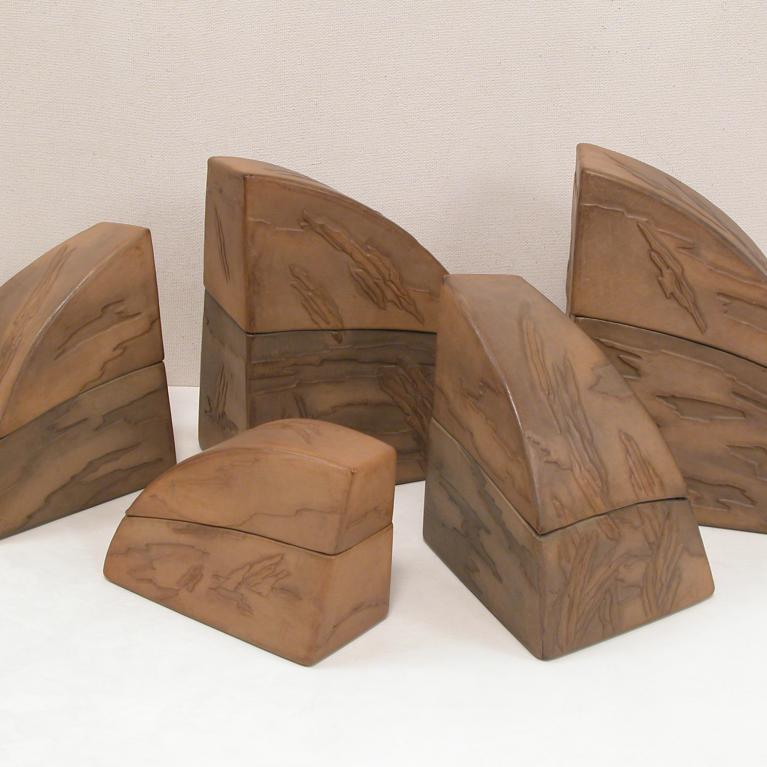The Leather Art Collection
The leather art collection comprises about 900 artworks including book-bindings, albums, folders, decorative boxes, leather ornaments, wall decorations, as well as big size three dimensional objects for the decoration of interiors. The collection characterises the period from the 1920s to the present day.
Book-bindings form the oldest and greatest part of the collection. The highlight of the collection is artworks by the first Latvian professional book binders: Andrejs Purmalis and Margita Melnalksne. The compositions are laconic, restrained and bear the impact of various directions of modernism of the time. Due to the high level professional performance, the artists have received great acknowledgement at international exhibitions.
The advancement of Latvian leather art after the World War II, and particularly, in the 1950s can be characterised by the art of Vladimirs Lācis and Jānis Ozoliņš. They created abundantly ornamented albums and folders, which represent the major artistic directions of the field vividly demonstrating the decorative super abundance of decoration and Soviet symbol usage.
In future years essential changes in leather art followed. Artists Helēna Lauva, Tija Krūmiņa and Modests Trepšs being aware of the possibilities the material itself could yield, discarded extra rich application of ornamental patterns and created abstract free style leather compositions. Of special interest is the artwork collection by the leather artist and teacher of leather art Vera Cepurīte. She introduced and applied new technologies in leather art, at the same time emphasizing the natural beauty of the material itself. This artistic direction in Latvian leather art in the 1970s and 80s is represented by the artworks of Valda Āboliņa, Velta Baltoka and Andris Štrauhs. A new stage of advancement in artistic quality and flourishing of leather art was initiated by Latvian artists - graduates of the Art Institute of Estonia. The works by the artists Ilda Sīlis, Ingrīda Preisa, Leo Preiss, Astrīda Siltuma and Anda Līce bear painterly qualities, associative imagery, application of new materials and techniques: appliqué, paintings and embroidery. The leather art collection testifies to the fact that also the application of traditional techniques in leather was elaborated. Book-bindings and decorative series of boxes fashioned by Anatolijs Vanags and Ēriks Priedkalns are vivid proof to it. In the 1990s the dominating idea of creative liberty, abandonment of obligatory utilitarian function and decorativeness of objects was embodied in the leather art objects executed by Biruta Auna and Inga Kalniņa.

